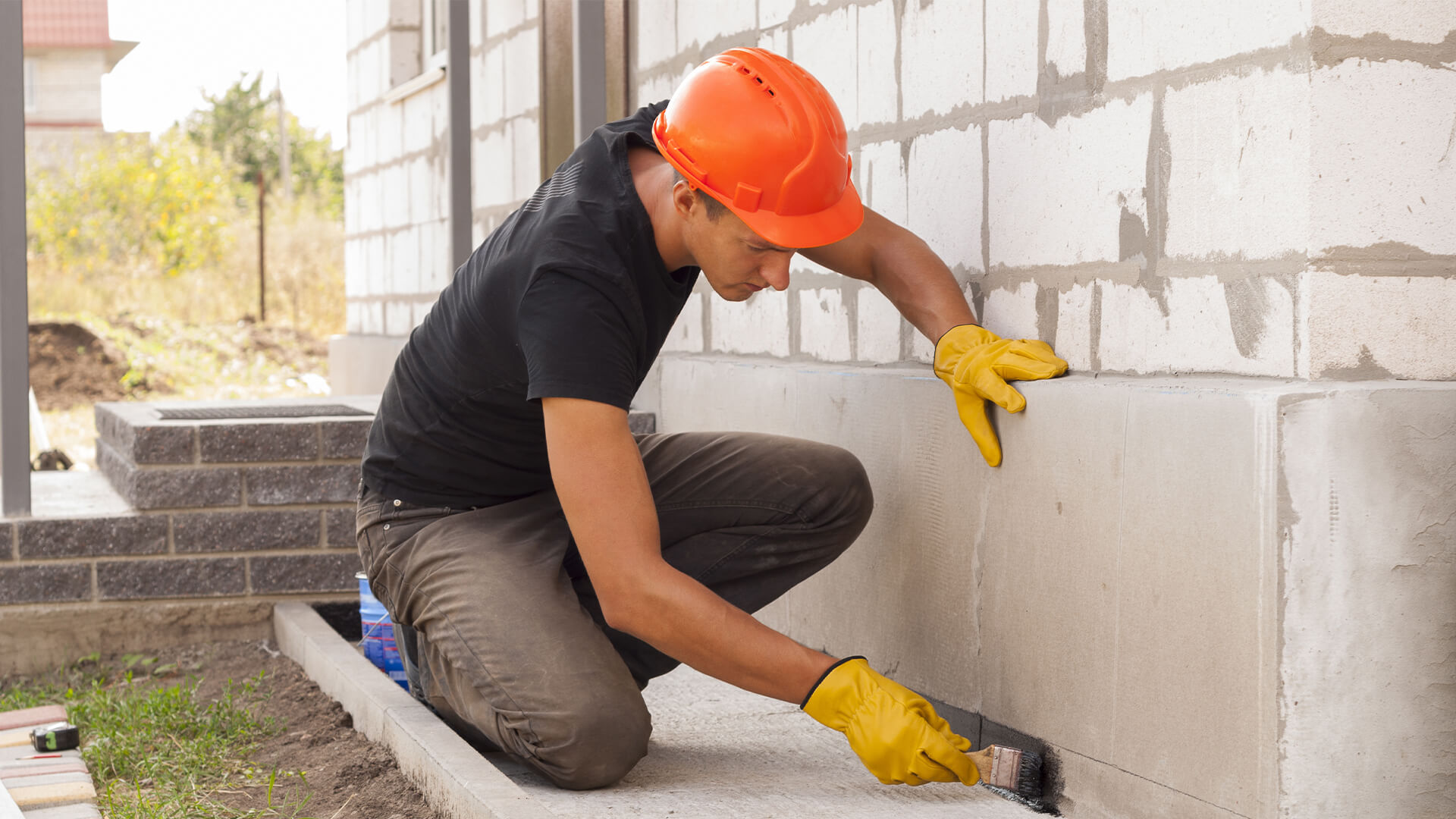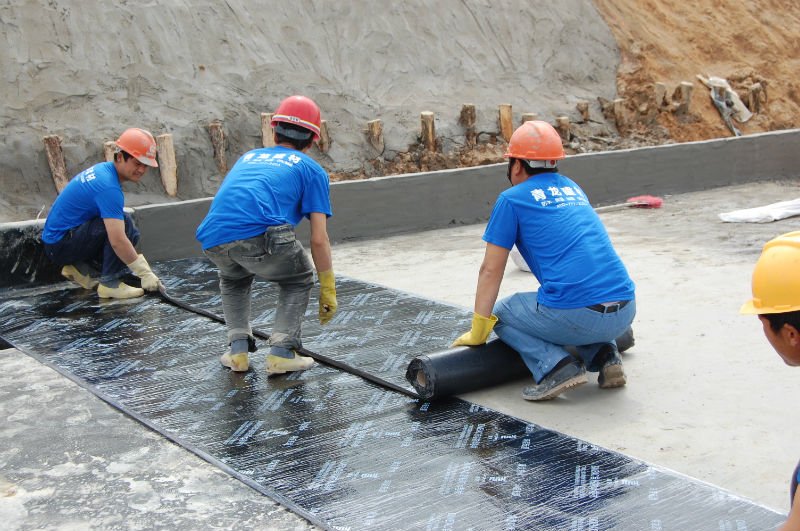Sorts of Waterproofing: Discovering the Numerous Techniques and Their Applications
Waterproofing is a crucial element of building and upkeep. It shields frameworks from the harmful results of water damage. There are a number of approaches readily available, each with its special applications and benefits. From membrane layer systems to cementitious remedies, recognizing these choices is important for efficient application. The selection of waterproofing technique can considerably impact sturdiness and long life. Exploring these various techniques exposes their distinct benefits and potential obstacles, prompting additional factor to consider of ideal remedies.
Membrane Layer Waterproofing Systems
Membrane waterproofing systems serve as a critical barrier versus water invasion in different frameworks. These systems generally are composed of thin sheets made from materials like rubber, thermoplastic, or asphalt, which are related to surface areas to prevent dampness penetration. They can be installed above or listed below grade and are especially reliable in locations vulnerable to high water direct exposure, such as cellars, roofing systems, and foundations.The installment procedure entails cleansing the substrate, using adhesives or primers, and exactly suitable the membrane layer to assure full coverage. Membrane layer systems can be either fully stuck, mechanically connected, or laid loose, relying on the particular demands of the task. They provide sturdiness and flexibility, accommodating architectural activities without endangering their waterproofing abilities. Furthermore, these systems can be enhanced with extra layers for boosted defense. Inevitably, membrane waterproofing systems are crucial for protecting structures versus water damages and maintaining long-term stability.
Liquid-Applied Waterproofing Coatings
Liquid-applied waterproofing coverings supply a versatile option for securing surfaces from water seepage - Yard drainage Omaha. These coatings consist of liquid materials that, when applied, create a seamless, versatile membrane. Their flexibility permits application on numerous substratums, consisting of concrete, steel, and timber. The finishes can be utilized in varied environments, from residential to industrial settings, making them appropriate for roofings, foundations, and below-grade structures.One considerable benefit of liquid-applied coverings is their capacity to satisfy uneven forms and penetrate splits, producing a robust barrier versus dampness. They frequently show exceptional adhesion properties and resistance to UV radiation, guaranteeing longevity and resilience. Additionally, the application procedure is normally straightforward, enabling quick setup and decreased labor costs. This approach likewise minimizes the threat of water merging, as the continual layer successfully guides water far from vulnerable locations. Generally, liquid-applied waterproofing finishes are an efficient option for thorough water protection
Cementitious Waterproofing Solutions

Cementitious waterproofing solutions offer a durable option for structures requiring dependable moisture security. These systems mainly use a blend of cement, sand, and chemical additives to develop a water-proof barrier. They are typically put on surfaces such as concrete wall surfaces, structures, and floors, offering a durable, long-lasting protection against water intrusion.One of the essential advantages of cementitious waterproofing is its ease of application; it can be applied utilizing a brush, roller, or spray, making it ideal for different job dimensions. In addition, this approach works with several surfaces and can commonly be used along with various other waterproofing techniques.Cementitious services are particularly efficient in environments where water exposure is a worry, such as cellars or below-grade structures. Their outstanding adhesion residential or commercial properties assure that they bond well with substratums, offering a strong and impermeable layer against moisture infiltration.
Bentonite Waterproofing
Bentonite waterproofing is a very efficient approach that utilizes sodium bentonite clay to develop an all-natural obstacle against water. This strategy exploits the one-of-a-kind properties of bentonite, which broadens upon contact with water, sealing any type of prospective leaks and stopping moisture resource seepage. It is frequently utilized in different applications, consisting of structure wall surfaces, tunnels, and keeping wall surfaces, where water resistance is essential.Bentonite can be applied in numerous forms, such as panels or blankets, giving flexibility in setup. Its ability to self-seal makes it an appealing alternative for areas subject to moving dirt or changing water levels. Additionally, bentonite waterproofing is eco-friendly, as it is an all-natural material that does not present dangerous chemicals right into the surroundings.
Drain and Outside Waterproofing Equipments
Effective waterproofing frequently includes a combination of methods, including drain and external systems. Water drainage systems, such as French drains and sump pumps, are designed to reroute water far from structures, lowering hydrostatic stress against foundations. These systems are vital in stopping water build-up that can result in structural damage and mold and mildew growth.External waterproofing, on the other hand, includes applying protective obstacles to the structure's exterior. Methods such as the installment of waterproof membrane layers, layers, or sealers can help prevent water infiltration. This approach not just secures the structure but also enhances the total sturdiness of the structure.Together, water drainage and exterior waterproofing systems form a complete service to handle water efficiently. By executing these techniques, homeowner can secure their financial investments against the harmful impacts of wetness, ensuring long-lasting security and safety and security for their structures.
Regularly Asked Questions
How Do I Pick the Right Waterproofing Approach for My Task?
Selecting the appropriate waterproofing approach depends on factors such as job kind, ecological problems, budget, and wanted longevity. Evaluating these facets enables notified decisions tailored to certain demands and demands.

Can Waterproofing Be Applied in Cold Weather Issues?
Waterproofing can be applied in chilly weather conditions, yet it needs specific materials and techniques. Cold temperature levels might influence curing times and bond, necessitating careful selection of items created for low-temperature application.
What Are the Common Indicators of Waterproofing Failing?
Common indicators of waterproofing failing consist of noticeable water discolorations, peeling paint, wet odors, mold and mildew development, and splits in walls or foundations. Sump pump installation & replacement Omaha. These signs suggest that dampness is penetrating the barrier, compromising its performance
The Length Of Time Does Waterproofing Last Before Requiring Maintenance?
The longevity of waterproofing differs, usually lasting in between 5 to 10 years. Elements such as material high quality, ecological conditions, and maintenance practices influence its sturdiness, demanding periodic evaluations to guarantee reliable protection against have a peek at these guys water intrusion.
Are There Eco-Friendly Waterproofing Options Available?
The inquiry of green waterproofing options exposes an expanding rate of interest in lasting products (Water Solutions Omaha). Numerous natural compounds, such home as plant-based sealers and recycled products, use reliable services while reducing environmental impact, interesting environmentally mindful customers